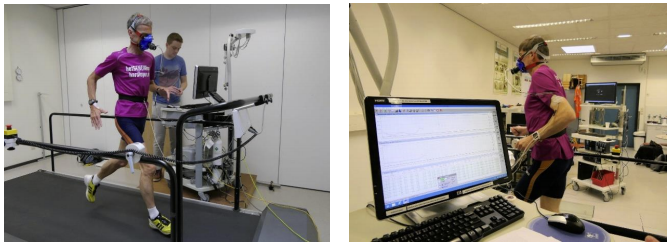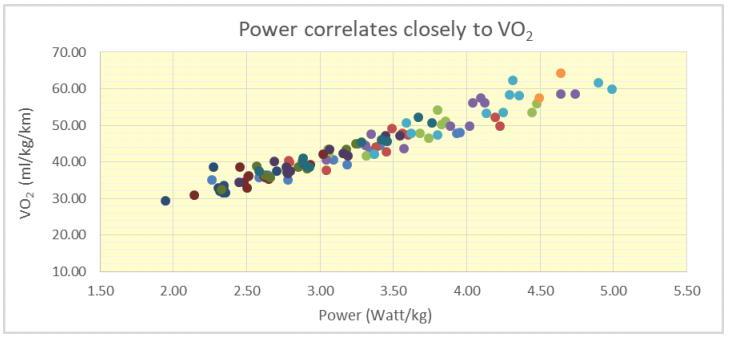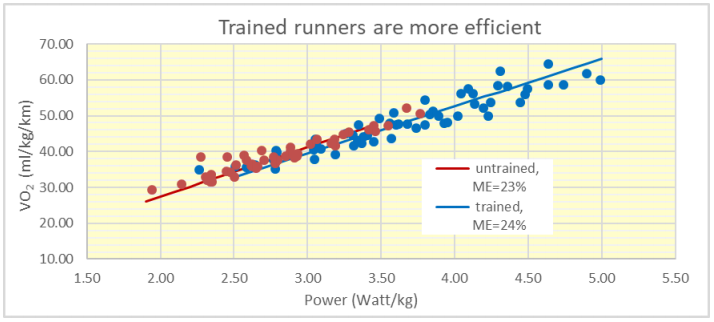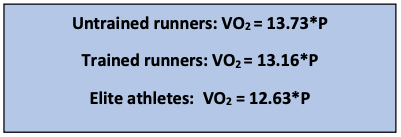How to use Stryd power to calculate your VO2

In our book (www.thesecretofrunning.com) we have described our initial treadmill research on 14 test runners in the physiological laboratory of the Dutch Sports Medical Center SMA Midden Nederland. We were quite impressed by the results which showed that the Stryd power data closely correlated to the VO2, which has always been considered as the gold standard in physiological research.
Recently, we have carried out a new research project in cooperation with the physiological laboratory of prof. Maria Hopman at the Radboud University of Nijmegen (RUN), the Netherlands. A full scientific paper on the project has been submitted to the Journal of Sports Sciences and Medicine. In order to share our results with the running community at large, we have written 4 short popular papers (numbered 24-27) on the main findings:
1. The (close) relationship between Stryd power and VO2
2. The impact of speed on the running economy (ECOR and RE)
3. The impact of cadence on the running economy (ECOR and RE)
4. The physiological differences between trained and untrained runners
This paper is the first of this series. The pictures below show the authors during the treadmill tests as well as some of the laboratory equipment at RUN. The left picture also shows the primary investigator, MSc-student Rick Sniekers.

The close relationship between Stryd power and VO2
The project included measuring the VO2 (in ml O2/kg/min) and Stryd power (in Watt/kg) of 21 runners (11 trained and experienced distance runners and 10 untrained students) at 5 different speeds (maintained during 3 minutes, increased in 4 steps of 1 km/h to lactate threshold). This means that we got a total of 21*5 = 105 data of VO2 and power. The figure below shows the data base (the colors correspond to the different speeds and test groups, trained or untrained). The correlation between VO2 and Stryd power is quite impressive and even more so when we realize that these data points represent a heterogeneous set of runners (trained and untrained) and test conditions (low speed up to lactate threshold speed). This confirms our earlier findings that the daily Stryd power data can be used very well to provide an alternative for the once-a-year determination of the VO2 max in a physiological laboratory.

Trained runners need less oxygen to produce the same Wattage
A striking result is that we found that most of the scatter in the data can be eliminated when we divide our test runners in 2 groups, i.e. trained and untrained runners. Trained runners need about 4% less oxygen, so they have a somewhat lower VO2 (in ml O2/kg/min) at the same power P (in Watt/kg). This means that their Metabolic Efficiency (ME) must be higher. In our book, we have derived the following relationship for the ME:
ME = Mechanical power/ Metabolic power = P/(VO2/60*EY)
The EY is the energy yield of oxygen which can be approximated at 19 J/ml O2. As an example, we use a VO2 of 50, an EY of 19.0 and a P of 3.5, so the result is an ME of 0.22 or 22%. The figure shows that the untrained runners had an ME close to 23%, whereas the trained runners were 4% more efficient with an ME close to 24%. The 2 lines closely match the data. We note that most of the remaining scatter between the data points is caused by the differences in speed. This leads to a change in the fuel mix (less fatty acids and more glycogen as speed increases) and the EY. Consequently, the VO2 at low speeds tends to be relatively high; the reverse is the case at high speeds.

How to calculate your VO2 from your Stryd power data
We conclude that the following 3 formulas can be used to calculate the VO2 from Stryd:

We have derived the formulas for the untrained and trained runners from our data, using an average EY of 19 J/ml and a ME of resp. 23% and 24%. The accuracy of the formulas might even be increased by incorporating the speed of the test, as at high speed the EY is 19.5/19 =1.03 higher and at low speed the EY is 18.3/19 = 0.96 lower. Consequently, the VO2will be 3% lower at high speed and 4% higher at low speed.
We note that our trained runners were experienced distance runners with many years of training. However, they were not of the elite level. We expect that the ME of elite athletes may approach the theoretical maximum of 25%. Consequently, elite athletes could use the formula: VO2 = 12.63*P.
The above formulas approximate the VO2 for all power ranges. In order to estimate your VO2 max, you should use the power that you can maintain during 10 minutes.
If you would like to purchase The Secret of Running (or the German version, Das Geheimnis des Laufens), you can do so at the bottom of store.stryd.com.

